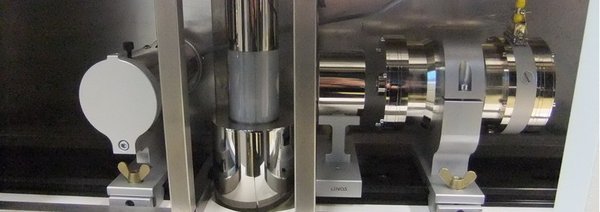
Mössbauer Spectroscopy - P. Adler
The application of Mössbauer spectroscopy in solid state and materials research takes advantage of the hyperfine interactions, i.e. the interactions between the electronic shell and the nuclear charge distribution which are sensitive to the chemical environment. The most important parameters extracted from the spectra are the isomer shift, the quadrupole splitting, and the magnetic hyperfine field. Mössbauer spectroscopy is a local probe which supplements the information from scattering techniques and yields information on oxidation states and chemical bonding, coordination environments, magnetic ordering phenomena, and dynamical effects.
At present one Mössbauer measuring station for 57Fe Mössbauer spectroscopy is available which consists of a WissEl Mössbauer spectrometer, a 57Co/Rh source, and a Janis closed cycle refrigerator cryostat (SHI-850-5) for experiments between 5 and 300 K.
Several materials of contemporary interest in solid state and materials science are studied, for instance iron-based superconductors like FeSe, magnetic Heusler alloys, and transition metal oxides, in particular double perovskites like the magnetically frustrated antiferromagnet Sr2FeOsO6.
A recent development is the use of synchrotron radiation for exciting the respective nuclear transition of a Mössbauer isotope. Experiments can be performed in the time domain (nuclear forward scattering, NFS) or in the energy domain as in conventional laboratory Mössbauer experiments (synchrotron Mössbauer source, SMS, spectroscopy). Synchrotron-based Mössbauer techniques are particularly versatile for studies of thin films and for high-pressure studies in diamond anvil cells. In the latter the high brilliance of the synchrotron radiation and the absence of a non-resonant background allow an unprecedented quality of spectra and drastic reduction of typical data collection times from days to hours. In collaboration with the high pressure group we have performed high-pressure SMS studies on magnetic compounds at beamline ID18 of ESRF (European Synchrotron Radiation Facility, Grenoble).